NICK FRIEND - SPECIAL REPORT: Spread across the cricketing landscape, members of the England Women teams through the 2000s are running the show; this part of a wide-ranging project focuses on the adminstrators to have come from that generation
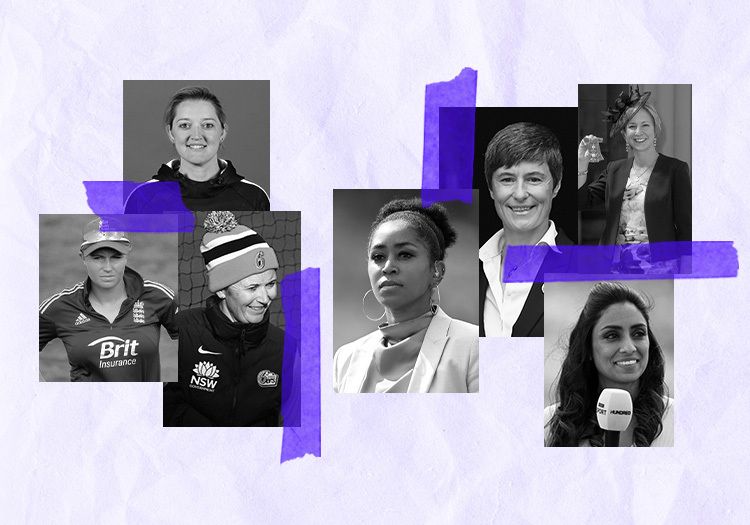
Clare Connor is one of English cricket's busiest people.
Female players before her held positions in the game – Rachael Heyhoe Flint has a gate in her memory at Lord's and was Lucy Pearson's predecessor on the ECB board – but few have made such an impact as Connor, to the point where in many eyes she is administrator first, England captain second.
"Without doubt, she has driven all of what's happening today," says Edwards, her successor as captain. "She has played the biggest role in many ways in forging the way for all of us. I certainly wouldn't be in the role I'm in as the head coach of a regional team if it wasn't for her. She paved the way for us all because of the way that the ECB have jumped onboard with the game, and then the media getting involved. It's been a snowball effect. She is in charge."
"She was probably the only female fighting the cause for women's cricket in England," adds Lydia Greenway. "We obviously owe her a huge amount."
The old adage is that you can't be what you can't see, and the message rings true here. Holly Colvin made her international debut the year after going to her first women's match; Sarah Taylor was the centrepiece of the England team four years after finding out that one existed for women. They are a prime case study for the value of visibility. Certainly, it resonates with everyone involved in this story: how could it not, when the former captain was heading up the ECB in 2022 or when Isa Guha and Ebony Rainford-Brent have so far transcended the women's game in their broadcast lives? Beth Barrett-Wild, a former county player with Essex and England Women's media manager through the latter part of the era in question, now heads up the women's Hundred.
"There is definitely a link between personal experience and personal ambition," she says.
More fundamentally, there is a shared pride – not only as women in a male-dominant space, but also because when anyone retires from professional sport, uncertainty looms.
"Just knowing what it's like once you've left cricket, wondering what to do next and being lost, everyone has made some brave decisions," adds Colvin.

Clare Connor is one of the busiest people in the game (Nathan Stirk/Getty Images)
No one had to stay in cricket, particularly at a time when the majority were holding down other jobs just to facilitate an England career.
Take Clare Taylor, whose international days began when Margaret Thatcher was still in power and ended three months before Shayne Ward won the X Factor. Talk about six degrees of separation: Taylor debuted alongside Jan Brittin and finished as a teammate of Katherine Sciver-Brunt, who now plays with Freya Kemp, who was 12 weeks old when Taylor retired.
She was a postwoman in Bradford and Huddersfield through her England journey, played football for Liverpool and at the 1995 World Cup, was the first English woman to 100 ODI wickets, earned an MBE for services to women's sport in 2000 and later became a PE teacher.
Only, in 2017 – after a conversation between Connor and the ECB's then-head of integrity, James Pyemont – she took up a role in English cricket's anti-corruption unit, overseeing televised matches involving the men's northern counties or England Women.
"We go into the crowd and look to see if there are people using the time delay to bet against other people and make some money immorally.
"The other guys are former police officers. I fell into it by accident."
***
"Reassuring," says Sciver-Brunt, still playing and the final thread between this England cricket team and the old days, of what it means to look up and see a sport surrounded in positions of influence by friends and ex-colleagues. "Incredibly so," smiles Edwards, who speaks regularly to Barrett-Wild about how The Hundred should look. "Incredibly safe hands." Even Clare Taylor's job – however serious – means there's a friendly face looking over them from the stands.
"To have the people behind the scenes in charge of the stuff that you do being people who've been there is the most crucial thing," says Sciver-Brunt. "When you complain about stuff or put stuff forward, you want them to understand where you're coming from. And only people who've done that know what you're talking about and what it means and what importance it has.
Arguably, no one has straddled more eras of women's cricket in England than Sciver-Brunt, who missed playing in a skirt by a year but still began her international career in hand-me-downs. For her more experienced teammates, even that was a big shift. "But I was like: 'What is this crap?'"
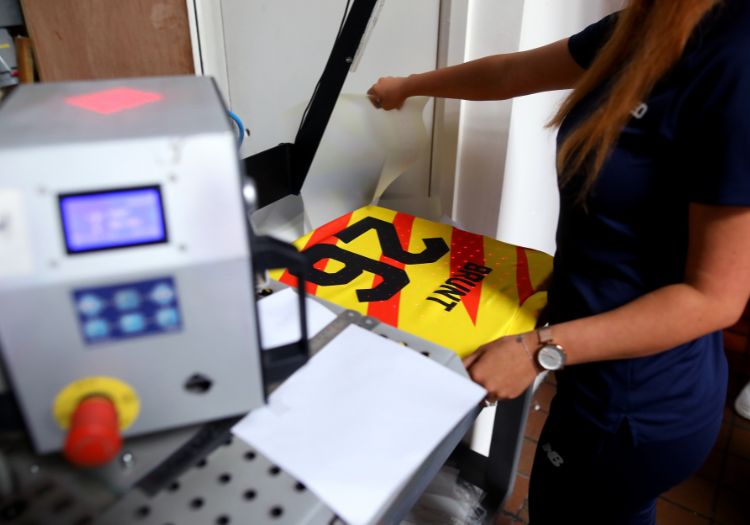
Katherine Sciver-Brunt has seen everything in the last two decades (Charlie Crowhurst/Getty Images)
Gradually – and that is the most appropriate word – those shifts have become more significant. England Women were part of the open-top bus parade after the 2005 Ashes but were lost in the noise of that day, and five years later they were touring Australia in their own hotel rooms without having had to contribute financially. "It was like: 'Woah, this is luxurious,'" says Sciver-Brunt, when the reality is that such tiny gains shouldn't have felt so large scale.
Another decade on, she spent last summer decked out in Trent Rockets yellow. She was devastated to miss out on a Women's Premier League deal that would have been the final frontier in a legendary career. She would almost certainly have earned a contract if the WPL had come sooner, as it ought.
It's no coincidence, then, that more radical change has come when players have mobilised, "when we've taken it into our own hands". They've never gone on strike – "we've never had to, but we've talked about it," says Sciver-Brunt – but she cites the journey to central contracts as the consequence of a meeting with the PCA, who got behind them and ultimately laid the platform for professionalisation, pensions and maternity plans.
"This stuff doesn't happen without having a voice," says Sciver-Brunt. "Unfortunately, you do have to make noise. You can't just let your performances do the talking, as much as it helps. Don't get me wrong, winning World Cups and Ashes helps. But it only helps in a slow growth, not a quick one. I guess the only time things have happened in my experience – in immediate fashion – is if you're prepared to do something about it."
Barrett-Wild is aware that she has a major role there: she played for Essex but never for England, instead living that dream vicariously for three years in her press officer role, which spanned the before and after of central contracts.
She would sit on the team bus and laugh with Edwards about how surreal it was: "I was basically travelling the world and going to World Cups and being in the thick of that team environment but without any pressure of having to play. And I was always sort of on the teamsheet in my role as media manager."
In her current position, arguably no one – other than Connor – has more scope to move forward the landscape of English women's cricket.
"One of the things that I talk a lot about is making sure that my little girl has exactly the same opportunities through cricket as her brother Ben," she explains. "That's a very key aspect of what we're trying to do – the reimagination of cricket as an equally relevant and accessible sport for girls as for boys.
"I love doing what I'm doing now because I love being in the fight. It's like: 'Right, come on. Let's be better as a sport, let's try and raise everybody up here and really bang the drum to push things forward.' Hopefully, there will come a point where you don't have to fight quite so hard."
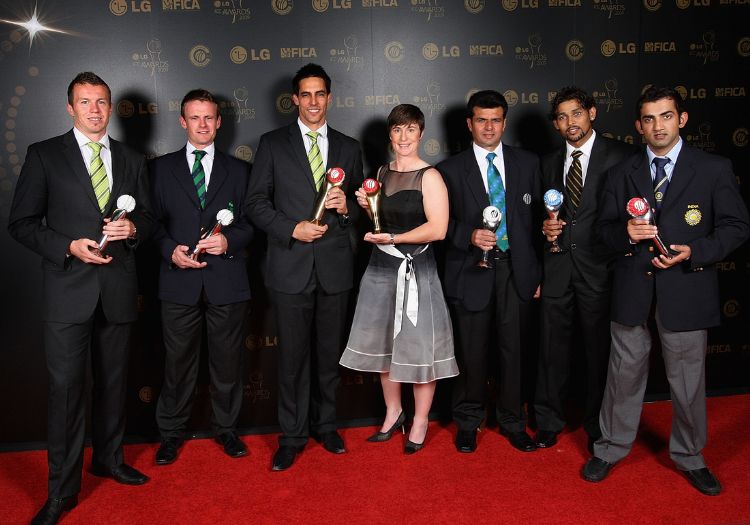
Claire Taylor was the Women's Cricketer of the Year in 2009 (Hamish Blair/Getty Images)
***
Holly Colvin is in an airport lounge when she picks up the phone to chat, a month after the conclusion of women's cricket's debut at the Commonwealth Games, for which the former England left-arm spinner was tournament director.
"I wanted to do something that no one has ever really done before," says England's youngest Test cricketer, who is used to breaking new ground. While every other sport had prior precedent to fall back on, Colvin was writing and implementing the playbook as the organising committee's cricket expert.
So, she is due her break, still just 33 years of age but already an accomplished administrator and – in the opinion of her former teammates at least – basically Clare Connor in-waiting. "We all called it three years before she'd even retired," laughs Sarah Taylor, a schoolmate back at Brighton College before they were international colleagues.
Colvin was 26 when she retired to take up a role at the ICC, somehow still more than a decade on from when she first played for England: at 15, she played the first of five Test matches – a statistic dug up recently when Rehan Ahmed was picked in Pakistan, though that was never particularly part of the plan.
Because there was no plan. How could there be at that age?
"I never grew up wanting to be an England cricketer," she says. "That wasn't on my radar."
But that was the paradox: Colvin had never even heard of Belinda Clark before her debut. You got nothing in return but by starting so young it took over your life regardless. And yet, as Edwards recalls: "If you hadn't made your debut by the time you were 19, you didn't think you were going to play for England. Now, that is the most ridiculous thing I've ever heard."
So, there Colvin was – a student getting on with her adolescence – when Richard Bates called the family home and asked whether she would be available for the next four days to play against Australia at Hove during the famous Ashes summer of 2005. If ever you wanted to understand the differences at play, while Michael Vaughan and Duncan Fletcher were masterminding the men's landmark victory, Bates and Connor were plucking kids out of school.

Clare Taylor played football for England and made her international cricket debut in 1988, only retiring in 2005 (Craig Prentis/Getty Images)
By then, she had hardly even played much club cricket and hadn't really come across many of her new teammates. She would retire with 174 international wickets to her name and plenty still in the tank, if only those had interested her.
The reality, however, was that Colvin was an outlier: she earned A-stars across the board at GCSE and missed England tours to focus on her studies at Durham University when others were deferring degrees or splitting them into part-time projects; at 27, she effectively ran the organisation of a Women's World Cup qualifier in Sri Lanka on her own, sorting out accreditation passes at 2am.
"We needed a format, we needed a host, we needed a budget, we needed venues," she recalls. "We had to do everything from scratch. We were doing all the accommodation bookings, all the transport. I had to venue-manage two venues at once."
Her next job will be outside cricket, though, if she has things her way, keen to try out her expertise in another sport.
You can't rank these women by the magnitude of their achievements, but Colvin is a year older than Heather Knight and Lauren Winfield-Hill. And when you put it like that, you begin to understand quite how much she has shoved into a young life. In an alternative reality, she'd have five years to go as a professional.
She had always known, however, it wouldn't be like that: "For me cricket was always a bit of a happy accident in my life. For lots of other people, it was life."
Regrets? None.
Instead, questions. Rather than training before and after work, what would it have been like to dedicate your whole self to the sport? Would that all-encompassing approach have kept her involved for longer or driven her away? What if she hadn't been picked so young? How would she have dealt with today's scrutiny, almost non-existent through her career? Would she have felt so comfortable in an era of greater competition for places? What would it be like for "your whole income to rely on your performances"?
"I think it was a special time, and I genuinely wouldn't change it."
In the amateur era, everyone had their own reasons for playing: you had to love it, but you also had to understand how far you were willing to stretch for it.
"It can just be that you don't care how much you're paid," says Sarah Taylor. "You love the game so much that it doesn't matter if you get paid. But other people have a mortgage and need to play in order to earn money. That's absolutely fine. Some people just want to travel.
"I think that's really nice in a team. You just care that the person is driven enough to be the best person and best cricketer that they can possibly be for the team. We really didn't care about what our motivations were as long as we got the best versions of ourselves."
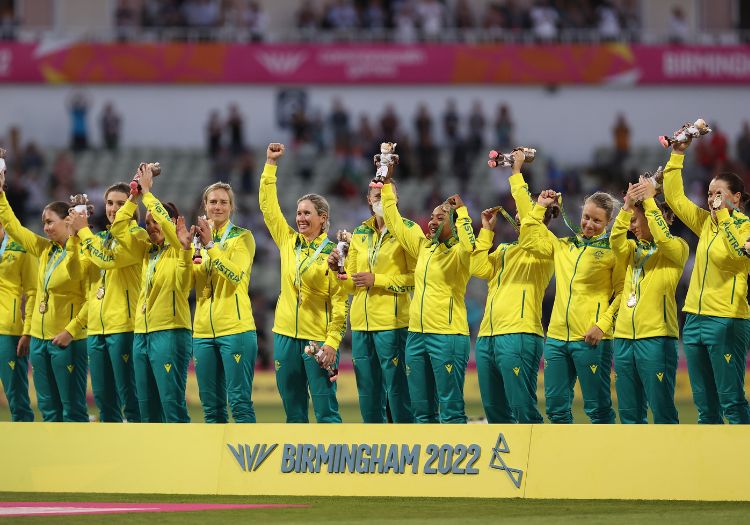
Cricket at the 2022 Commonwealth Games was the work of Holly Colvin (Ryan Pierse/Getty Images)
Even now, as she watches the emergence of new opportunity after new opportunity, Clare Taylor, a World Cup winner in 1993, remains grateful that she relied on the Royal Mail and not the ECB for her mortgage. "For the girls now, it is their job," she says. "What do you do with a job away from cricket if you don't like it? You get another job. You have to be 100 per cent in love with the job, as well as the game. I wouldn't want cricket to be 24/7.
"I've done what I've done; I got the accolades and I've got the memories. I've got everything that I need from the game. I've got the friends. If people blow my trumpet, I get a bit embarrassed. I'm happy with my lot; it's a beautiful game."
Claire Taylor, her near-namesake and an Oxford maths graduate, spent four years taking the opposite approach: throwing everything solely at it. But she realised by 2005 that she was better off with balance in her life. She became a junior consultant at Sums Consulting in 2006 – she's a management consultant there four days per week now – and took back up the orchestral violin, which she'd put to one side to accomplish her "mission statement to be the best cricketer in the world". Playing cricket for 10 months of the year, walking away from hockey, living with her parents, going jobless and putting down her instrument in pursuit of naked ambition ultimately didn't have the desired effect.
"The approach I took after that was a better approach," she reflects. "But the ambition changed – from it being all about me in the early 2000s to what I could be for the team, and that appeared to be a much more beneficial way of thinking about things. I was very driven, but when you had to fit in 30 hours' work and 30 hours' training each week if you wanted to play the violin on the side or have any kind of social life, if you wanted to fit it in you had to be organised and make the most out of every session."
Mark Lane, her England head coach, told The Cricketer last year that he has never come across anyone with Taylor's work ethic, while Greenway paints her as simply an exemplary character.
"She was massive on morals and being decent people. We never got too far ahead of ourselves because we had the grounding of those people around us, and I think that fed into the way that we played our cricket. We weren't the most talented group of players, but we had a bit about us."
"Playing wasn't really for me in the end. I take great joy and pride in putting on cricket events for other people and giving other people opportunities. But if I'd continued, I'd have been playing cricket for the wrong reasons – money, and that was never the driver"
Holly Colvin
Anya Shrubsole, new to the team in 2008 as Taylor enjoyed her Indian summer, sums her up thus: "She was as professional as they come at a time when women's cricket wasn't professional."
The result? In 2009, Taylor became the first woman to be a Wisden Cricketer of the Year, was named the ICC Women's Cricketer of the Year, was the leading run-scorer at the World Cup and was player of the tournament at the World T20. Mission accomplished.
"I don't have any regrets," she insists, "because I did the best that I could with what I had. I don't feel it would have changed my attitude to the game if I'd been paid to play, but the one real difference is the quality of rest that you get.
"If you're working all the time and your holiday time is taken up with cricket tours, you're never resting properly. So, that's the one thing that the girls do have now: proper rest and recovery and management of workloads."
On reflection, Colvin's best cricket came in her latter teenage years, when she had no responsibilities and was playing for the boys' first team at school, which meant coming up against current male professionals and knowing that "if I did bowl a full toss, it would get smashed by some 6ft 4in 18-year-old bloke".
"I had to have that discipline. It made international cricket for me just another game. I was probably more mature as a youngster than I am now at 33. I was super-sensible back then."
Rainford-Brent remembers discussing that nuance as a group, reflecting on the resilience it produced. They were a generation that grew up in men's cricket and the upshot was a group "that didn't have any fear".
"We all grew up where we didn't get full support, so it meant that we were able to go into environments – male-dominated or not," says Rainford-Brent, who points to the correlation between women playing sport and leadership roles. "If you mix all those qualities, you end up with a bunch of people who have good skillsets that are transferrable into the world."
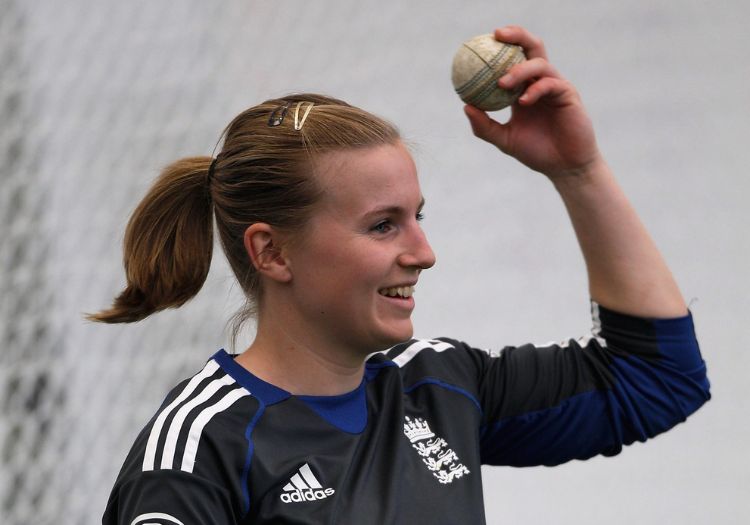
Holly Colvin retired from international cricket at 26 (Harry Engels/Getty Images)
So, if it sounds utterly bizarre that a player might leave the game in their mid-20s effectively to take up its running, then consider all that, but also this: Colvin was already working for Lord's Taverners, had been Cricket Without Boundaries' head of recruitment and had used her platform as an international cricketer to take a sabbatical in Africa to spread AIDS awareness by the time she was named as the ICC's first women's cricket manager.
Connor, the ECB's director of England Women's cricket at the time, Colvin's captain on Test debut and a fellow Brighton alumna, could have been forgiven for observing a mirror image.
"Playing wasn't really for me in the end," Colvin admits. "I take great joy and pride in putting on cricket events for other people and giving other people opportunities. But if I'd continued, I'd have been playing cricket for the wrong reasons – money, and that was never the driver."
Not that she saw those things coming at the time. She made her final England appearance a year before central contracts were introduced and spent her final season only playing for Sussex on the amateur county circuit: "Now having domestic contracts, I didn't think I'd ever see that. It has come on a hugely long way, also in providing opportunities for people like me to work in the game."
For Colvin, a job at the ICC meant an opportunity to shape the future. Her memory of starting in Dubai in 2015 is of women's cricket as a neglected sub-strand and "a curtain-raiser for the men". She is reluctant to take sole credit for the development since, instead considering the marked improvements to be the legacy of "a shift at the organisation as a whole".
"It meant that we were able to drive through more decisions because we had more people realising that we needed to take women's cricket seriously and that it could be a really valuable commercial product.
"Often we would have these huge peaks of World Cups and then huge troughs when they wouldn't play a game. West Indies had the first-ever standalone women's event with the T20 World Cup in 2018 – but then their women's side didn't play a home T20 series until January 2020. They lost so much momentum, having had a full capacity crowd against England at St Lucia, which was incredible. It was such a shame. You need to be able to sustain your fans and have consistent home fixtures to boost cricket in your home country."
***
"Oh God, very."
Laura MacLeod is trying to remember how quickly she was back in action for England after the arrival of her children. Eight weeks, she reckons, was the gap between childbirth and a four-day team bonding trip to Swanage.
She was the only mother in the England setup at the time, and there have hardly been any – Arran Brindle had her son a few years later – since. Jo Chamberlain came before and Rosalie Birch became a mum after her retirement, so MacLeod "was probably the only one in that generation who had kids and returned".
She wears that fact as a badge of honour because she had always wanted kids young and didn't let popular misconception get in the way. So, getting back in mattered on several levels – not simply for the sake of an international career that at one point had her as Edwards' vice-captain, but more importantly so that she could present her example to future generations against the stereotype that "now you've got kids you won't be able to do what you've done before".
Her response to that typecasting? "Well, bollocks to that."
She adds: "I wanted to prove that it can be done, and I also wanted to prove to my sons that, as a female, you can still be a sportsperson."
These days, she chairs the MCC women's cricket sub-committee, for which she replaced Claire Taylor, and is director of cricket at Central Sparks now but can't recall ever having had this conversation with any player at her regional hub. "Nor have they ever approached me," she says. "I think the England players have spoken about this and what you can do nowadays with freezing your eggs."
She worries that an unintended consequence of regional professionalisation might be an even greater reluctance among players for that to change, such is the hunt for contracts and the short lifespan of an athlete's window for improvement. "I think because it's such a high bar that they set on and off the field – physically and mentally – that there is a fear of whether you can get back to that level."
MacLeod managed it, and her international retirement, she insists, was only ultimately "born out of a loss for the love of the game". If any regrets linger, they centre on a feeling that perhaps she stopped too abruptly, when a six-month break might have refreshed her. "But I didn't see that as an option." So much has changed for the better.
Looking back, she retains a sense of gratitude to her ex-husband, Richard, and her then-in-laws, who juggled their own commitments with childcare for George and Harry to allow her to chase these dreams. "I always think about myself as pretty unique," she says. "There aren't many mothers out there who would say that they played cricket for England months after having your kids."

Laura MacLeod unretired briefly for the first edition of the Kia Super League (Daniel Smith/Getty Images)
Ironically, she briefly unretired almost a decade later upon hearing of the Kia Super League's launch. You could hardly blame players like her – Susie Rowe, an ex-England player who quit in 2015, returned at the next new dawn for the first edition of The Hundred – for wanting to sample life in a more indulgent environment.
"There was a match fee, it was new. It was the expectation, the focus and the way that the KSL was being portrayed was a level higher than I had ever experienced before. There was intrigue as to what it was about; there was intrigue to see what the level of play was like now. And then, you look at some of the players and what they were getting in terms of salaries and sponsorship, and there was a professional jealousy in that."
MacLeod scored 32 runs in three games for Thunder and promptly called it a day. "I quickly realised that the new generation were very different to me," she laughs. "I think I knew the moment that I met up with the squad: I was old enough to be some of their mums and, in fact, I had a child the same age as some of them."
Emma Lamb, who made her international debut 25 years after MacLeod, was her team's opening batter.
MacLeod made her Test debut in 1999; Lamb in 2022, when England faced South Africa at Taunton. There was a sense, then, of a new start. Sciver-Brunt had retired from the longest format and sat watching from the stands. Shrubsole was part of the BBC's commentary team, no longer an international cricketer. The last links cut between that all-conquering team of 2009 and the present day. The only familiar face was Sue Redfern's, one of the game's umpires. She is pioneering in her own way: the first woman to stand in an England men's international.
But otherwise, everyone has retired, one at a time: teams broken up, regeneration after revamp. Most knew when their moment had come, a couple were ushered out, others who went earlier simply could no longer justify it, one or two looked around and realised that their team had moved on.
"I felt like I was almost sitting there, watching it evolve," remembers Sarah Taylor, echoing MacLeod's recollections. "You could play for England, go back and play a club game and think this kid was all right. But then years later, you'd be playing for England with them and you're at the non-striker's end.
"I was obviously going through my stuff, and all articles will say that I retired because of my anxiety, but I reckon that was about 40 per cent of it. Sixty per cent of it was that I felt like I'd run my course. I'd had my journey of playing cricket for England, and I felt like I was one of the older ones. I was that 17-year-old fresh-faced greenhorn coming through, but all of a sudden I was 30 and watching these teenagers."
Over six sections - available via the links below (and all free to read on March 8, International Women's Day) - this project tells the story of how these women graduated from their careers as international cricketers to become industry leaders following their retirements.